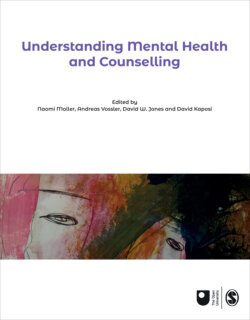Читать книгу Understanding Mental Health and Counselling - Группа авторов - Страница 51
На сайте Литреса книга снята с продажи.
The DSM and homosexuality
ОглавлениеHomosexuality had long been regarded as pathological within psychoanalysis and psychiatry, and it had been included as a ‘sexual deviation’ in the personality disorder category in both DSM-I and DSM-II. Many psychologists and behaviour therapists used sexual aversion therapy with gay men, which involved the use of electric shocks (Cromby, Harper and Reavey, 2013). However, the gay rights movement gathered momentum following the 1969 Stonewall riots in New York against homophobic policing, after which lesbian and gay activists disrupted several APA conventions. Kutchins and Kirk (1999) reported that Robert Spitzer, a psychiatrist and professor of psychiatry at Columbia University in New York, met gay psychiatrists and apparently became convinced of the need to change the classification, though he proposed retaining a category for those who were unhappy with their homosexuality. Following further discussions within the APA, in 1973 its board of trustees voted to remove homosexuality from DSM-II but also to introduce a new category of ‘sexual orientation disturbance’ for those unhappy with their sexuality. Attempts by psychoanalysts and other psychiatrists to overturn the decision failed when they lost an APA referendum in 1974. DSM-III relabelled the category as ‘ego-dystonic homosexuality’. Apart from the obvious issue that such ‘disturbances’ of sexuality were only being applied to homosexuals, this category also ignored the impact of widespread prejudice and discrimination. While ‘ego-dystonic homosexuality’ was dropped, the category of ‘sexual disorder not specified’ (including ongoing and significant distress about one's sexual orientation) was included until the publication of DSM-5.
